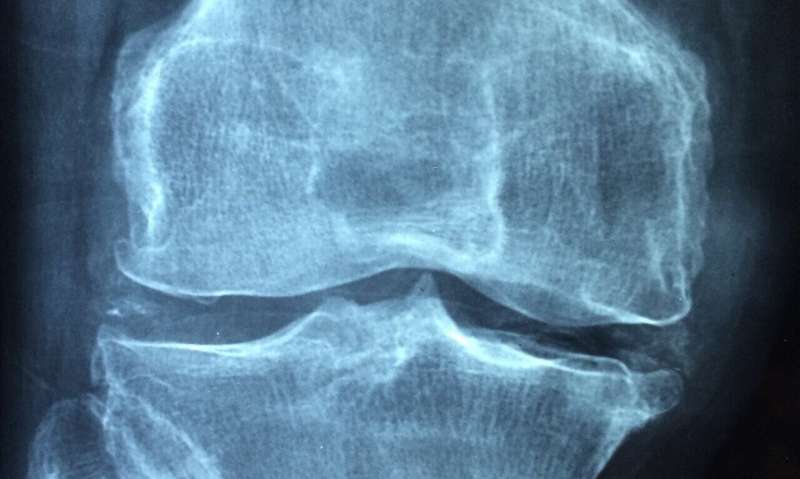Link established between altered gait after ACL injury and knee osteoarthritis

Almost half of patients who undergo surgery to repair a torn anterior cruciate ligament will develop knee osteoarthritis.
Rehabilitation specialists and researchers have long hypothesized that ACL injury results in gait changes that contribute to the onset of osteoarthritis, said Lindsey Lepley, assistant professor of kinesiology at the University of Michigan. A recent study led by Lepley is the first known to demonstrate that link.
Lepley's team, led by McKenzie White, a doctoral student in movement science, developed a novel, noninvasive rodent model of ACL injury that is very similar to human ACL injury, and were able to establish the first known direct link between altered gait and knee osteoarthritis.
"This study helps to firmly justify the need for gait-retraining after ACL injury," Lepley said. "If it is not already being undertaken, we suggest patients with ACL injuries talk with their rehab specialists about incorporating a gait retraining program into recovery.
"Many studies and clinical interventions stand on the hypothesis that altered gait drives osteoarthritis development, but there really is a lack of data to substantiate this claim. Our data provides a clear link that gait matters, and bad gait is associated with worse knee health. From a clinical standpoint, this means that changing the way people walk after injury may in fact be a good way to help keep joints healthier."
The ACL is one of the ligaments that connects the femur (thigh bone) to the tibia (shin bone). It runs diagonally through the knee and helps stabilize it by preventing the tibia from sliding out in front of the femur. It also provides rotational stability to the knee.
Lepley said the gait deficits observed in their animal model of ACL injury include limping and stiffness, and are "very similar to what we see in humans, where they have reduced knee flexion angles that get worse over time as joint health deteriorates."
The researchers found that knee flexion angles and bone architecture were severely impacted after ACL injury and that the biomechanical adaptations in gait resulted in considerable losses of bone volume.
"A significant challenge for the rehabilitation community is understanding which factors to target with treatments and when," Lepley said. "Developing models of injury that closely replicate the human injury condition is key to testing treatments aimed at slowing or preventing osteoarthritis."
The study appears in the Journal of Orthopedic Research.
More information: McKenzie S. White et al. Relationship between altered knee kinematics and subchondral bone remodeling in a clinically translational model of ACL injury, Journal of Orthopedic Research (2020). DOI: 10.1002/jor.24943















